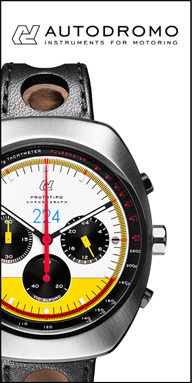 2010 could be a pivotal year for the auto industry in some unexpected ways. While many in the general press spend time contemplating whether the beleaguered American car companies will be able to profit from Toyota's colossal missteps and inevitable losses in market share, I happen to share the view that has been expressed in a few channels of the auto media that the South Korean automakers Kia and Hyundai stand to benefit the most. While most media attention and fear mongering has been relentlessly focused on the imagined, or at least exaggerated threat of Chinese cars coming to our shores, products from the People's Republic remain woefully not ready for prime time in quality, design, and above all, safety. In contrast, the Korean companies, who have already been here for decades, have suddenly started to get things right. Seriously right. After years of playing on acceptable to very good quality at rock bottom prices, Kia and Hyundai have clearly begun to ally their ever-improving competency in quality and value with new designs that are actually appealing and desirable for the first time. I doubt even the most observant person could tell you what a Kia is supposed to look like, yet now with their "tabbed grille" motif they have finally begun to forge a consistent brand look that is memorable and identifiable.
2010 could be a pivotal year for the auto industry in some unexpected ways. While many in the general press spend time contemplating whether the beleaguered American car companies will be able to profit from Toyota's colossal missteps and inevitable losses in market share, I happen to share the view that has been expressed in a few channels of the auto media that the South Korean automakers Kia and Hyundai stand to benefit the most. While most media attention and fear mongering has been relentlessly focused on the imagined, or at least exaggerated threat of Chinese cars coming to our shores, products from the People's Republic remain woefully not ready for prime time in quality, design, and above all, safety. In contrast, the Korean companies, who have already been here for decades, have suddenly started to get things right. Seriously right. After years of playing on acceptable to very good quality at rock bottom prices, Kia and Hyundai have clearly begun to ally their ever-improving competency in quality and value with new designs that are actually appealing and desirable for the first time. I doubt even the most observant person could tell you what a Kia is supposed to look like, yet now with their "tabbed grille" motif they have finally begun to forge a consistent brand look that is memorable and identifiable.



This doesn't mean that the Koreans have completely abandoned the tendency to mimic more successful rivals (taking a page from Japan Inc.'s playbook). But for the first time, that mimicry has some teeth to back it up. For example, The Kia Soul in many ways apes the Scion Xb, but the Soul's design is so much more refined, and so much more interesting from every angle. Likewise, the new Genesis Coupe (shown up top) takes square aim at the Infiniti G37 Coupe, but is about 10 grand cheaper. I'd call that a win. Having seen a few of them on the road, I can say they are certainly eye catching and should really put the hurt on Nissan. And of course, the most talked about Korean car of the day, the Genesis sedan, has many obvious Teutonic styling cues, but even if that turns you off, it is hard to argue with the refinement, quality, and features offered for the pricepoint. If I were a Lexus, Acura, or Infiniti customer, I might make my first visit to a Hyundai showroom! My only criticism is the decision to market the car as a Hyundai rather than creating a more upmarket sub-brand as the Japanese did.

So the Koreans are starting to make some decent looking cars for the first time. Big deal, right? Why am I so confident that Kia and Hyundai are going to take a chomp out of Toyota's (and the Big Three's) market share? Because this is part of a larger pattern of business behavior that has already transformed the electronics and whitegoods sectors in the US market, and I have witnessed this firsthand in my job as an Industrial Designer. Rewind to ten years ago. The biggest cel phone handset makers in the US were Motorola and Nokia. The iPhone didn't exist yet, obviously, and LG and Samsung were making second rate products with poor distribution. Flash forward to today, and LG and Samsung are selling huge volumes of smart phones (dwarfing iphone sales, by the way) that lead the market in value and features for the money. Motorola hasn't had a hit since the Razr, and Nokia is largely irrelevant in the US market. Look at flat panel televisions. 10 years ago, Sony, Philips and Panasonic dominated the market. Now Philips doesn't sell flat screens in the US anymore, and again LG and Samsung have made the Japanese run for the hills by selling sexier, thinner TVs for less money. Stop in your local Best Buy if you don't believe me. Let's look at whitegoods. 10 years ago, LG was making private label appliances for US and Japanese companies. They had virtually no market share. Today, LG and Samsung are gaining market share every day with high quality, fashion-forward washers and refrigerators. Companies like Maytag and Whirlpool still have the majority of the market, but they are seriously panicking now. They even started making washers and dryers in red once LG did it. The consistent pattern here is the willingness of the South Korean companies to take greater risks, carve out slimmer margins, and to retool more frequently than the competition in order to keep things fresh. It is a formula that really seems to work in the face of the arrogance and complacency that had hitherto characterized the Japanese and American companies who suddenly found themselves under attack.
This is what is going to happen in the next 5 or so years in the US car market, in my opinion. Most people right now wouldn't be caught dead in a Kia or Hyundai (I had a friend laugh at me when I suggested he look at the Kia Soul instead of a Prius), but just watch as that perception rapidly changes due to improved design and marketing savvy -- The new Kia Sorento ad campaign is brilliant, by the way. The timing couldn't be better, too. With the market moving towards small cars, and Toyota mired in distraction, South Korea's moment to pounce has arrived. And let's not forget, who is making the battery packs to power the new Chevy Volt? You guessed it: LG of South Korea.
2010 could be a pivotal year for the auto industry in some unexpected ways. While many in the general press spend time contemplating on whether the beleaguered American car companies will be able to profit from Toyota's colossal missteps and inevitable losses in market share, I happen to share the view that has been expressed in a few channels of the auto media that the South Korean automakers Kia and Hyundai stand to benefit the most. While most media attention and fear mongering has been relentlessly focused on the imagined threat of Chinese cars coming to our shores, the cars from the People's Republic remain woefully not ready for prime time in quality, design, and above all, safety. In contrast, the Korean companies have suddenly started to get things right. Seriously right. After decades of playing on acceptable to very good quality at rock bottom prices, Kia and Hyundai have clearly begun to ally their ever-improving competency in quality and value with new designs that are actually appealing and desirable for the first time. I doubt even the most observant person could tell you what a Kia is supposed to look like, yet now with their "tabbed grille" motif they have finally begun to forge a consistent brand look that is memorable and identifiable. This doesn't mean that the Koreans have completely abandoned the tendency to mimic more successful rivals (taking a page from Japan Inc.'s playbook). But for the first time, that mimicry has some teeth to back it up. For example, The Kia Soul in many ways apes the Scion Xb, but the design is so much more refined, and so much more interesting from every angle. Likewise, the new Genesis Coupe, takes square aim at the Infiniti G37 Coupe, but is about 10 grand cheaper. I'd call that a win. Having seen a few of them on the road, I can say they are certainly eye catching and should really put the hurt on Nissan. And of course, the most talked about Korean car of the day, the Genesis sedan, has many obvious Teutonic styling cues, but even if that turns you off, it is hard to argue with the refinement, quality, and features offered for the pricepoint. If I were a Lexus, Acura, or Infiniti customer, I might make my first visit to a Hyundai showroom! My only criticism is the decision to market the car as a Hyundai rather than creating a more upmarket sub-brand as the Japanese did.
So the Koreans are starting to make some decent looking cars for the first time. Big deal, right? Why am I so confident that Kia and Hyundai are going to take a chomp out of Toyota's (and the Big Three's) market share? Because this is part of a larger pattern of business behavior that has already transformed the electronics and whitegoods sectors in the US market, and I have witnessed this firsthand in my job as an Industrial Designer. Rewind to ten years ago. The biggest cel phone handset makers in the US were Motorola and Nokia. The iphone didn't exist yet, obviously, and LG and Samsung were making second rate products with poor distribution. Flash forward to today, and LG and Samsung are selling huge volumes (dwarfing iphone sales, by the way) of smart phones that lead the market in value and features for the money. Motorola hasn't had a hit since the Razr, and Nokia is largely irrelevant in the US market. Look at flat panel televisions. 10 years ago, Sony, Philips and Panasonic dominated the market. Now Philips doesn't sell flat screens in the US anymore, and again LG and Samsung have made the Japanese run for the hills by selling a sexier, thinner TVs for less money. Stop in your local Best Buy if you don't believe me. Let's look at Whitegoods. 10 years ago, LG was making private label appliances for US and Japanese companies. They had virtually no market share. Today, LG and Samsung are gaining market share every day with high quality, fashion-forward washers and refrigerators. Companies like Maytag and Whirlpool still have the majority of the market, but they are seriously panicking now. They even started making washers and dryers in red once LG did it.
This is what is going to happen in the next 5 or so years in the US car market, in my opinion. Most people right now wouldn't be caught dead in a Kia or Hyundai, but just watch as that perception rapidly changes due to improved design and savvy marketing. The new Kia Sorento ad campaign is brilliant, by the way. The timing couldn't be better, too. With the market moving towards small cars, and Toyota mired in distraction, South Korea's moment to pounce has arrived. And let's not forget, who is making the battery packs to power the new Chevy Volt? You guessed it: LG of Korea.
 Tuesday, September 27, 2011 at 8:42PM
Tuesday, September 27, 2011 at 8:42PM 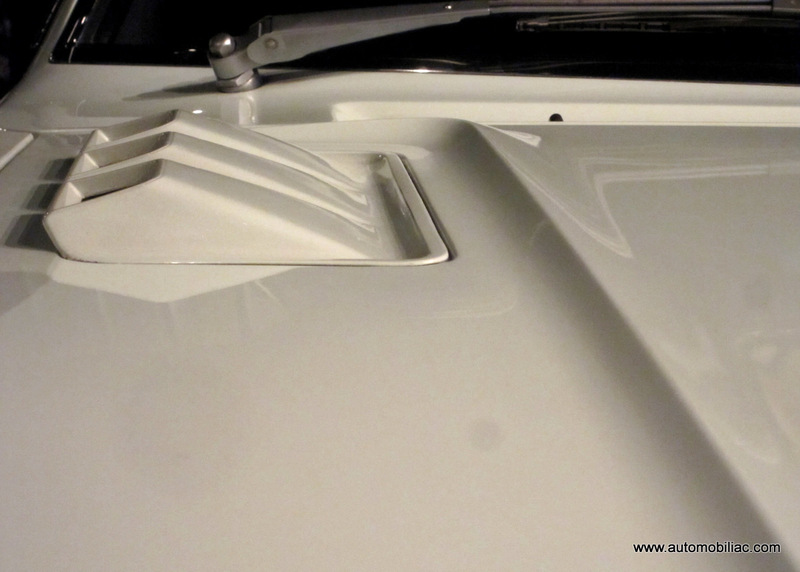 We don't talk a whole ton about Japanese cars here at Automobiliac. Not that I have anything against them, but I can count on the fingers of one hand (maybe two) the Japanese cars that get me really excited. Thankfully nearly all of them are on display in one place: The Venus Fort in Tokyo!
We don't talk a whole ton about Japanese cars here at Automobiliac. Not that I have anything against them, but I can count on the fingers of one hand (maybe two) the Japanese cars that get me really excited. Thankfully nearly all of them are on display in one place: The Venus Fort in Tokyo! 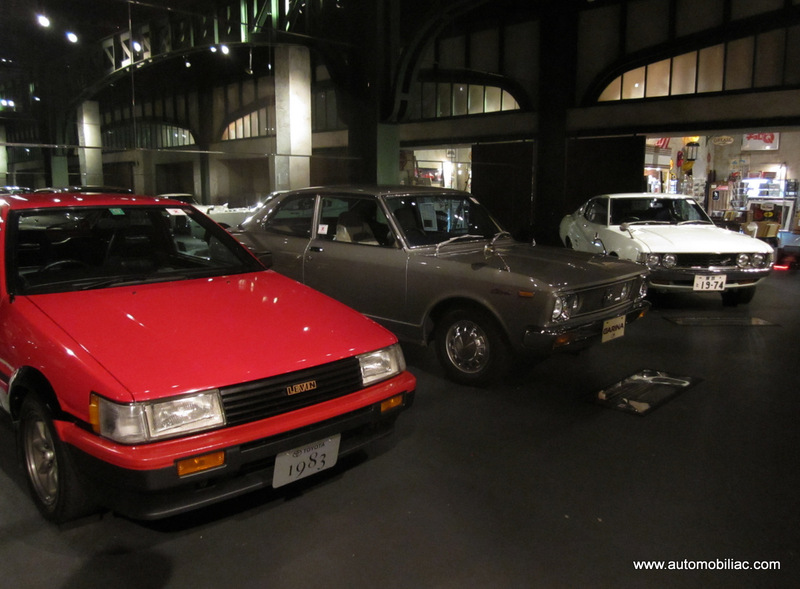 Venus Fort may sound like a border town brothel where girls wear chaps and six-guns and little else, but it's also the name of an enormous outlet mall in Tokyo Bay that is situated in the former location of a battery that guarded the port from enemy ships. The mall itself is a rather cheap imitation of the Forum Shops at Caesar's Palace, which is of course an expensive imitation of a Roman streetscape. I started to question why my Japanese companion would bring me to such a place when there are so many fine malls in Tokyo. My questions were soon answered when we rounded a corner to discover a Mazda Cosmo sitting there in all its low-slung glory. Now I had never thought much of the Cosmo from photos, but in person the car is so low and so sleek, it makes your jaw drop. It's spectacular --at once very vintage and incredibly fresh. The car has some American and some European motifs blended together very interestingly. It's almost like an Alfa Duetto mated with a '63 Ford Thunderbird and had this surprisingly beautiful offspring.
Venus Fort may sound like a border town brothel where girls wear chaps and six-guns and little else, but it's also the name of an enormous outlet mall in Tokyo Bay that is situated in the former location of a battery that guarded the port from enemy ships. The mall itself is a rather cheap imitation of the Forum Shops at Caesar's Palace, which is of course an expensive imitation of a Roman streetscape. I started to question why my Japanese companion would bring me to such a place when there are so many fine malls in Tokyo. My questions were soon answered when we rounded a corner to discover a Mazda Cosmo sitting there in all its low-slung glory. Now I had never thought much of the Cosmo from photos, but in person the car is so low and so sleek, it makes your jaw drop. It's spectacular --at once very vintage and incredibly fresh. The car has some American and some European motifs blended together very interestingly. It's almost like an Alfa Duetto mated with a '63 Ford Thunderbird and had this surprisingly beautiful offspring. After admiring the Cosmo for a few precious minutes, we ventured further inside and discovered room after room of JDM (Japanese Domestic Market) cars that I had never seen before. It's always a treat for me to see and learn about cars I have no knowledge of so this trip was a real treat. In the back of the main room was the crown jewel of any Japanese car collection: a Toyota 2000GT. I don't think I had ever seen one of these amazing cars in person before either. With only 337 produced, they are rare as metric hens' teeth, so I spent quite some time admiring the car's exquisite proportions. I came away with my opinion cemented: The 2000 GT is the finest sports car Japan has ever produced and probably ever will. And given the astronomical prices they command these days, I think collectors agree with me.
After admiring the Cosmo for a few precious minutes, we ventured further inside and discovered room after room of JDM (Japanese Domestic Market) cars that I had never seen before. It's always a treat for me to see and learn about cars I have no knowledge of so this trip was a real treat. In the back of the main room was the crown jewel of any Japanese car collection: a Toyota 2000GT. I don't think I had ever seen one of these amazing cars in person before either. With only 337 produced, they are rare as metric hens' teeth, so I spent quite some time admiring the car's exquisite proportions. I came away with my opinion cemented: The 2000 GT is the finest sports car Japan has ever produced and probably ever will. And given the astronomical prices they command these days, I think collectors agree with me. Also in the back of the museum is a shop for collectors called "Grease." They carry a huge range of models in every scale, organized by country and by marque. There is also a wide array of literature in both English and Japanese. It was pretty overwhelming and I suddenly started feeling foreign money burning a hole in my pocket. To extinguish that fire I dropped some smoldering cash on a very cool book detailing the history of the 2000GT.
Also in the back of the museum is a shop for collectors called "Grease." They carry a huge range of models in every scale, organized by country and by marque. There is also a wide array of literature in both English and Japanese. It was pretty overwhelming and I suddenly started feeling foreign money burning a hole in my pocket. To extinguish that fire I dropped some smoldering cash on a very cool book detailing the history of the 2000GT.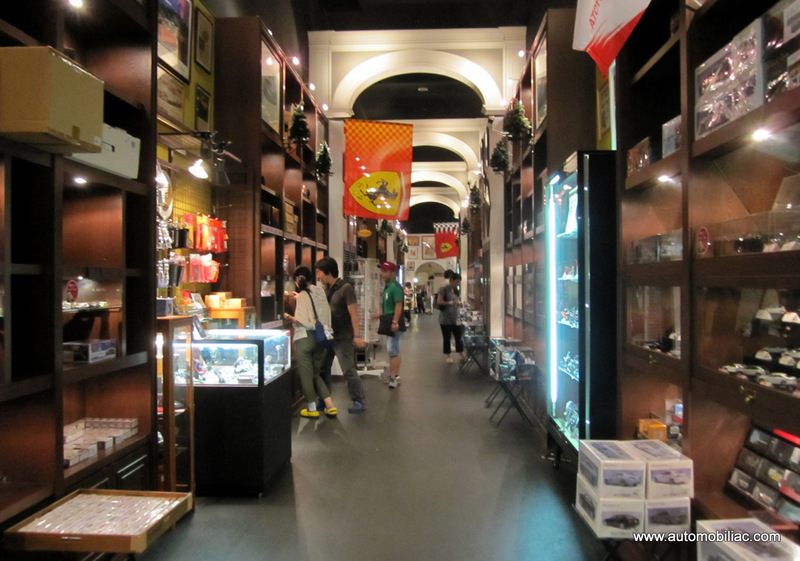 Another section of the museum features American and European cars, but in this context, who cares, right? Downstairs there was some more JDM magic in the form of an original Nissan Skyline GTR sitting outside in the courtyard and looking very thuggishly hot.
Another section of the museum features American and European cars, but in this context, who cares, right? Downstairs there was some more JDM magic in the form of an original Nissan Skyline GTR sitting outside in the courtyard and looking very thuggishly hot. 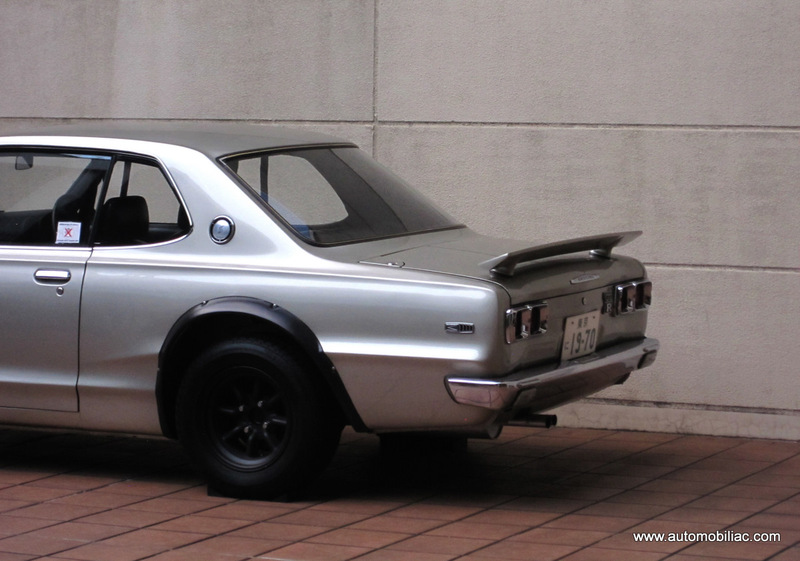 The GTR was accompanied by a Lotus Elan as well as a Le Mans Toyota racing car, which was shaped like a glossy red whale from outer space. There was also a coffee shop downstairs inexplicably named after Alessandro Nannini. The cafe was filled with F1 nosecones and other memorabilia, but the highlight was a glass vitrine through which you could look into the museum's restoration workshop. If anyone can identify the car on the left being worked on, I'd love to know what it is.
The GTR was accompanied by a Lotus Elan as well as a Le Mans Toyota racing car, which was shaped like a glossy red whale from outer space. There was also a coffee shop downstairs inexplicably named after Alessandro Nannini. The cafe was filled with F1 nosecones and other memorabilia, but the highlight was a glass vitrine through which you could look into the museum's restoration workshop. If anyone can identify the car on the left being worked on, I'd love to know what it is.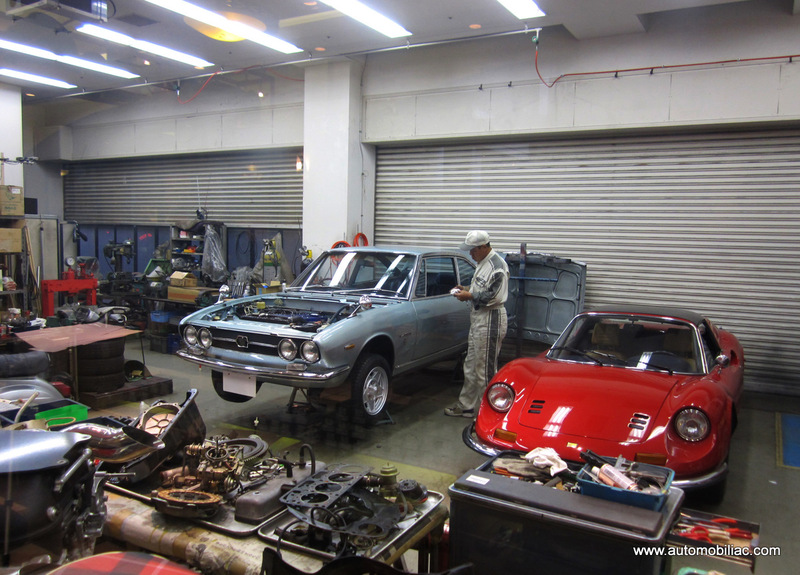 Needless to say, the Venus Fort was a highlight of my trip. In addition to the museum, which I believe is owned by Toyota, there is also an immense Toyota experience space called the Mega Web, featuring all of the company's latest models. It's like a permanent auto show booth, and you can even test drive the cars on a closed trail outside the mall. Check out my whole gallery HERE. I apologize that some of the photos aren't up to my ideal artistic standards. The lighting in the museum is particularly bad for photography.
Needless to say, the Venus Fort was a highlight of my trip. In addition to the museum, which I believe is owned by Toyota, there is also an immense Toyota experience space called the Mega Web, featuring all of the company's latest models. It's like a permanent auto show booth, and you can even test drive the cars on a closed trail outside the mall. Check out my whole gallery HERE. I apologize that some of the photos aren't up to my ideal artistic standards. The lighting in the museum is particularly bad for photography.
